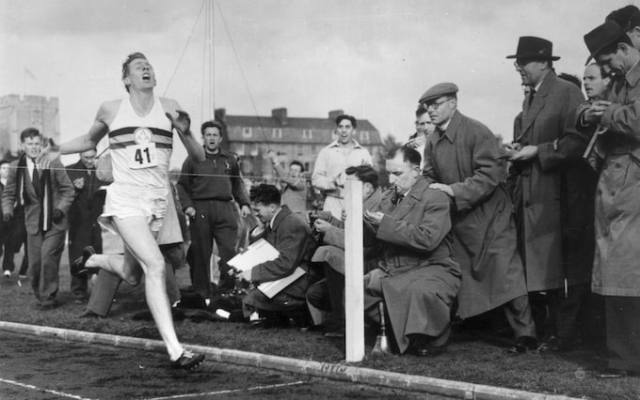 Sir Roger Bannister created one of the greatest moments in British sporting history in 1954. Photo: Getty Images/Norman Potter
Sir Roger Bannister created one of the greatest moments in British sporting history in 1954. Photo: Getty Images/Norman Potter
“It was as if Everest had been transported to Oxford — and we could watch it being climbed,” recalls historian Peter Whitfield, who was just six years old in 1954 when , exactly one year after Edmund Hillary conquered the highest peak on the planet, Roger Bannister fainted. the hands of two men in long coats who became the first person to run a mile in less than four minutes.
It remains one of the greatest achievements in the sport, and when Whitfield claims that Bannister has become simply «immortal», the truth of this assessment will be evident this Bank Holiday Monday when hundreds of people will take part in the one-mile classic race on the same track Iffley Road.
The fact that the three most recent world record holders — Steve Cram, Noureddine Morseli of Algeria and Hicham El Guerrouje of Morocco — are among those planning to join the Bannister family in Oxford for the 70th anniversary tells you everything about the enduring the magic of the feat.
Sports Illustrated named Bannister Sportsman of the Year in 1954, and when the iconic American magazine compiled a list of the 100 greatest sporting moments more than six decades later, a single British record emerged — between Tiger Woods' first Masters . Muhammad Ali's heavyweight triumph over Sonny Liston was Bannister's four-minute mile.
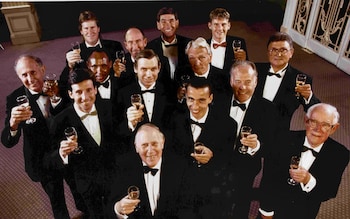 The then 14 world mile record holders (excluding Steve Ovett) gathered in London in 1994 with Bannister leading the way. Photo: Courtesy of the Bannister family
The then 14 world mile record holders (excluding Steve Ovett) gathered in London in 1994 with Bannister leading the way. Photo: Courtesy of the Bannister family
Whitfield became friends with Bannister in his later years, riding his bike as a guide on the great man's Viper scooter along the Oxfordshire country roads between pub lunches of cheese sandwiches, cider, mussels and white wine.
«For an 80-year-old man with Parkinson's disease, it was a big challenge and a big achievement, but he didn't think much of it,» Whitfield says of their adventures before Bannister's death in 2018, shortly before his 89th birthday.
“People smiled whenever they saw him. He was very modest. He really enjoyed sitting comfortably in the village pub and asking me about my life and ideas.
“He was deeply concerned with social and political issues and, as a physician, was devoted all his life to the creed of improvement: he believed that human life and society would steadily improve as we gained more knowledge, and that civilization would triumph over manifest ills.
“He had this commitment, this positive and ethical approach to making the world a better place if he could. He was very concerned about drugs in sports and the Olympic Games with all their commercialization and politicization. He really enjoyed the 2012 Games and thought there was great hope for it. He was a great friend of Sebastian Coe and Cram and was very interested in the emergence of Africans in endurance running. I once asked him if we could run a marathon under two hours, and he replied: “Yes, but it won’t be European or American.”
 Young Roger Bannister trains at Harrow School. Photo: Courtesy of the Bannister family
Young Roger Bannister trains at Harrow School. Photo: Courtesy of the Bannister family
The depth of Bannister's thinking is partly the inspiration for the title of Whitfield's fascinating new biography. Roger Bannister: The Sportsman and Philosopher draws on a variety of first-hand sources, from personal diaries and documents now on public display at the Bodleian Library in Oxford, up to approximately 115 photographs provided by the Bannister family, many of which are being published for the first time.
During our interview we were also joined by Thurstan Bannister, one of Roger's four children, who is still amazed at how many people still approach him every day in Oxford with personal memories of his father. “He gave his all to what he believed in,” Thurstan says. “He was a very serious person — sometimes it was hard to notice. For a long time he really had a triple commitment: clinical work, autonomic nervous failure research and then the Sports Council [Bannister was the first chairman of what is now Sport England].
< p>“He was always supportive of coaches and gave lectures at local schools. Even in the quiet of home he was truly admirable, demonstrating good values by example.»
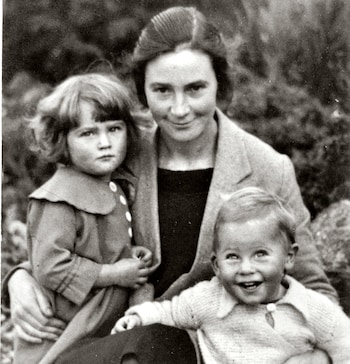 Roger Bannister aged about 18 months with mother Alice and three-year-old sister Joyce, circa 1930. Photo: Courtesy of the Bannister family
Roger Bannister aged about 18 months with mother Alice and three-year-old sister Joyce, circa 1930. Photo: Courtesy of the Bannister family
When I ask what these valuables were, Thurstan pulls out a document written by his father in 2001 called “Letters to My Grandchildren.” «I think my parents left me a message: Find what you're good at and do it as hard as you can, and spend your time trying to improve it,» Roger wrote. “That was the philosophy of life that I tried to apply. Since [1954], my actions have always been influenced by gratitude. In a sense, I have been trying to repay this debt of undeserved luck ever since.”
This passage causes Whitfield to exclaim: “What generosity! Being a man, he must have had flaws, but I never saw them… I can’t imagine that he had an enemy in the world.”
It is noteworthy that in achieving what he called «the glory of childhood dreams», Bannister always attributes such collective credit to his great friends Christopher Brasher and Christopher Chataway. “We did it—the three of us!” We shared a place where no man had ever gone before,” he wrote in his 1955 book The First Four Minutes.
Brasher and Chataway won Olympic and Commonwealth gold together, set a world record, became co-founded the London Marathon and became government ministers, but both are probably still best known for their supporting roles in the first four-minute mile.
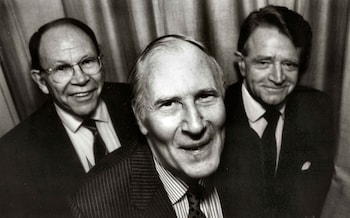 Bannister made sure to say that “we did it – all three of us!” ; Speaking about his famous feat, referring to the pacemakers he was using that day, Chris Brasher (left) and Chris Chataway (right). Photo: Courtesy of the Bannister family
Bannister made sure to say that “we did it – all three of us!” ; Speaking about his famous feat, referring to the pacemakers he was using that day, Chris Brasher (left) and Chris Chataway (right). Photo: Courtesy of the Bannister family
“All three of them together were pantheons… titans in everything they did,” says Brasher’s son Hugh, who is now race director of the London Marathon.
Looking back on the events of 6 May 1954, the combination of Whitfield's childhood memories, Thurstan's observations, Bannister's own diaries and old BBC footage still sends shivers down the spine. The backdrop was that both Australian John Landy and American Wes Santee were also aiming to break the four-minute barrier. Landy dropped below 4 minutes 3 seconds six times, but considered the task a “brick wall.”
Bannister, who was admitted to Oxford University at 16 and was already a qualified junior doctor, saw no logical reason why a time of, say, 242 seconds was possible but below the required 240 was not. He also approached his studies with complete independence of thought. Partly by design, but also out of necessity due to his work at St Mary's Hospital in Paddington, Bannister only trained between 12.30 and 1.30pm each day and managed the grueling 400m interval sessions.
“He took a scientific approach and was willing to do his best in the limited time he had,” Thurstan says. “He also managed to accumulate a huge amount of nervous energy — he felt that there was a primitive aggression that could be released at key events, and he learned how to do this.”
In his diaries, Bannister recalls how, in the winter of 1953-1954, he reached a plateau of 61 seconds per lap (he needed to average less than 60 seconds for four continuous laps), but then took a few days off from climbing with Brasher and returned to immediately find a two-second jump in speed.
They decided to target the Oxford University v Amateur Athletic Association match at Iffley Road and, having worked in hospital on the morning of 6 May, Bannister initially decided that gale force winds would make the attempt impossible. Then, on the Paddington to Oxford train, he met running coach Franz Stampfl, who convinced him not to waste this peak of physical and mental fitness. Bannister also spoke with Chataway, who suggested waiting until 5:00 pm before making a final decision.
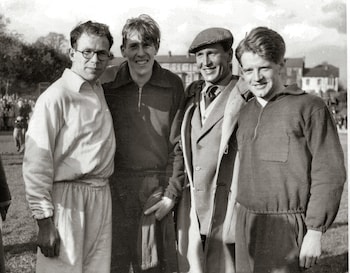 The people who made this impossible possible: Brasher, Bannister, his coach Franz Stampfl and Chataway Photo: courtesy of the Bannister family
The people who made this impossible possible: Brasher, Bannister, his coach Franz Stampfl and Chataway Photo: courtesy of the Bannister family
By then the wind had become gusty and they were gone at 18:00, with Brasher initially leading and stubbornly sticking to the planned pace before Chataway broke through the bell before Bannister's final sprint into history. “I felt that the moment of a lifetime had arrived,” Bannister wrote in 1955. “The world seemed to stand still or not exist. The only reality was the next 200 yards of trail beneath my feet. The tape meant final completion—perhaps disappearance.
“And only then did real pain overcome me. I felt like an exploding flashlight with no desire to live. It was as if all my limbs were caught in a constantly tightening vise. I knew I had done it before I knew the time.”
That evening, Bannister was taken to London to appear on television before being invited through the Foreign Office to New York, where he was given a police escort from the airport. “It was more than just a race,” Whitfield says. “It symbolized the conquest of nature by this man. It was monumental.”
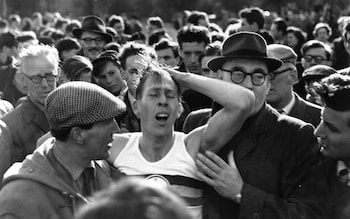 Bannister said “he was overcome with pain.” as soon as he crossed the line on that epic day. Photo: Getty Images/Norman Potter
Bannister said “he was overcome with pain.” as soon as he crossed the line on that epic day. Photo: Getty Images/Norman Potter 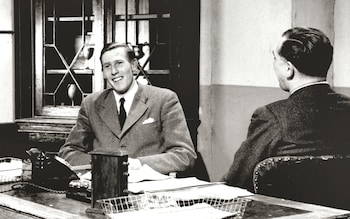 Just three hours after making history, Bannister gave an interview to the BBC, saying he was in pain after the race, but the hero looks surprisingly fresh here. Photo: Courtesy of the Bannister family
Just three hours after making history, Bannister gave an interview to the BBC, saying he was in pain after the race, but the hero looks surprisingly fresh here. Photo: Courtesy of the Bannister family
Bannister had also already decided that this would be his last year in competitive athletics, and so after winning an epic battle with Landy for the title at the Empire and Commonwealth Games in Vancouver, when they both ran under four minutes, and then winning the European Championships, he just left. He was 25. In his training diary for 1954, his last victory in Bern on August 29 — just 116 days after the four-minute mile — is accompanied by one word: Finis.
Of course, this was true only in a strictly sporting sense. Bannister was still early in his career in neuroscience, but was also pursuing other interests; transforming sporting facilities through his work on the Sports Council and the International Sports Council, becoming head of Pembroke College, leading the team of chemists who developed the first test for anabolic steroids, and helping to establish the Duke of Edinburgh's Award. Even in his 80s, Bannister received a degree in creative writing from Oxford University (with honors) and began researching the causes of the First World War.
 After climbing with Brasher, Bannister returned to training and discovered a two-second jump in speed — here the pair climb to the top of the Finsteraarhorn. Photo: Courtesy of the Bannister family
After climbing with Brasher, Bannister returned to training and discovered a two-second jump in speed — here the pair climb to the top of the Finsteraarhorn. Photo: Courtesy of the Bannister family
“He always emphasized that running was something that needed to be done with great focus, but also balanced other important things in life,” says Thurstan, who remembers running for pleasure with his father on Wimbledon Common, Richmond Park and Littlehampton Beach.
“Over time, he began to attach more importance to his medical career. One of the trophies he was most proud of was the American Neurological Association's Lifetime Achievement Award.
“I think he was in a better position because he could look back with joy on a life well lived—enjoy the company of friends, the love of his family around him and the interest he could take in new developments, with that all-encompassing optimism about human progress.»
Whitfield describes Bannister as the «last gentleman amateur» of sports. «I don't think Roger was ever prepared for this burst of euphoria that came over him, but he was able to accept this role as a national hero,» says Whitfield. “Greatness was thrust upon him, and through his humility, honesty, charm, calmness and intelligence, he was able to achieve it. He was a figurehead…a true English gentleman.»
Roger Bannister: Sportsman and Philosopher is published by Wychwood Editions, priced £18. To order call 07949 250880 or email pwwhitfield1@gmail.com
.







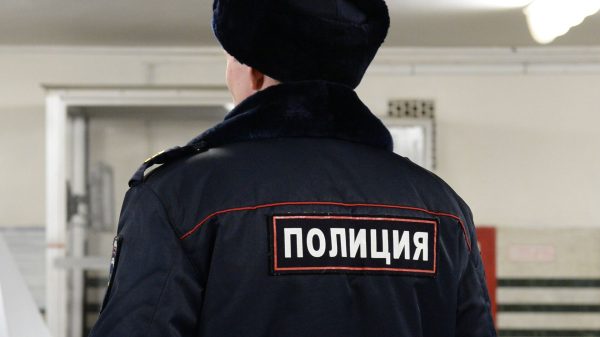


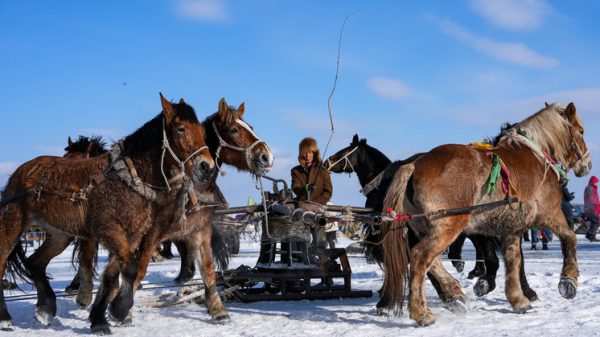

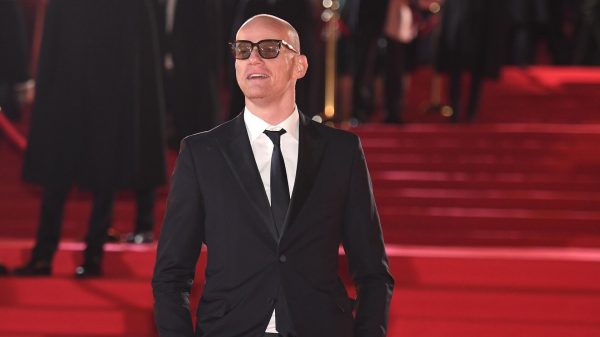


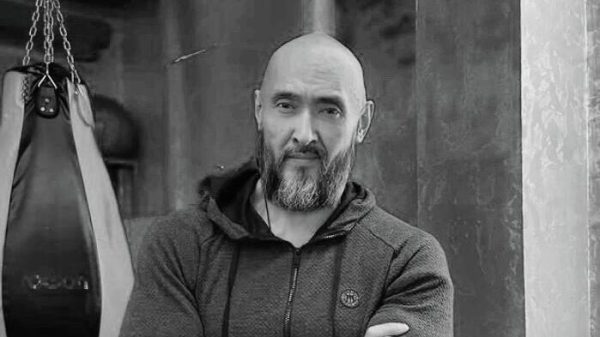


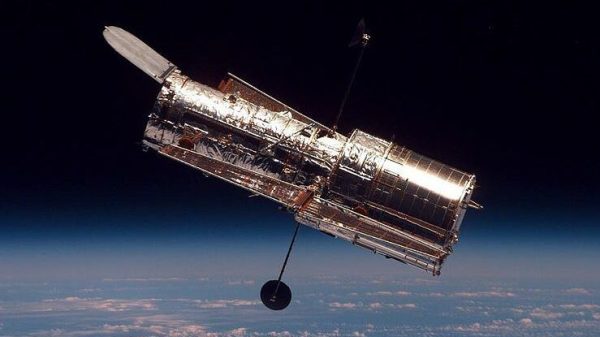







































Свежие комментарии